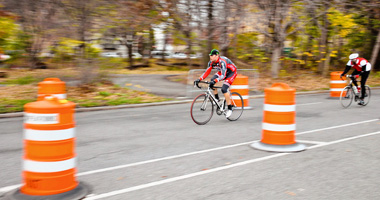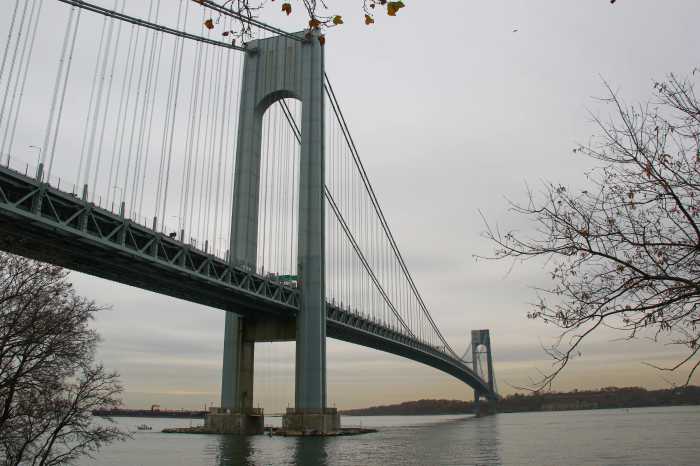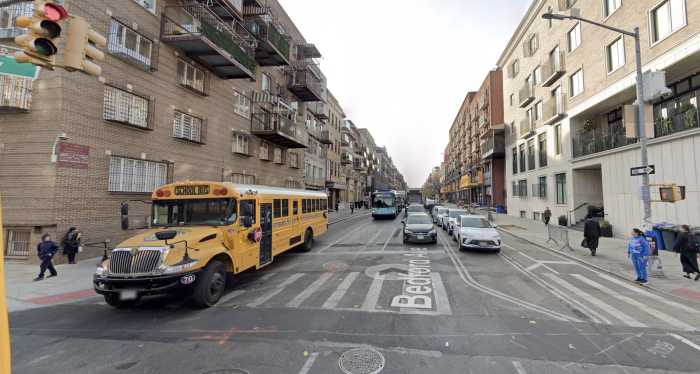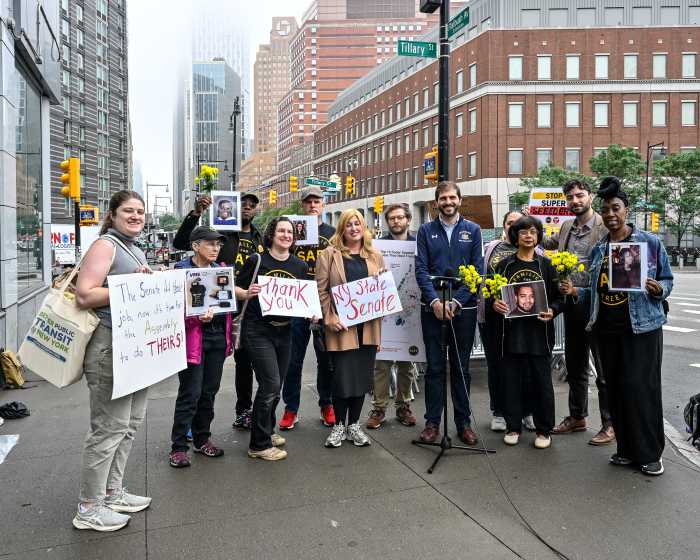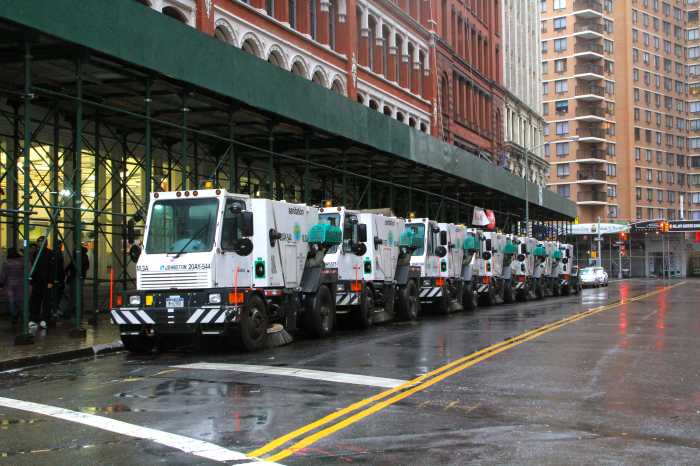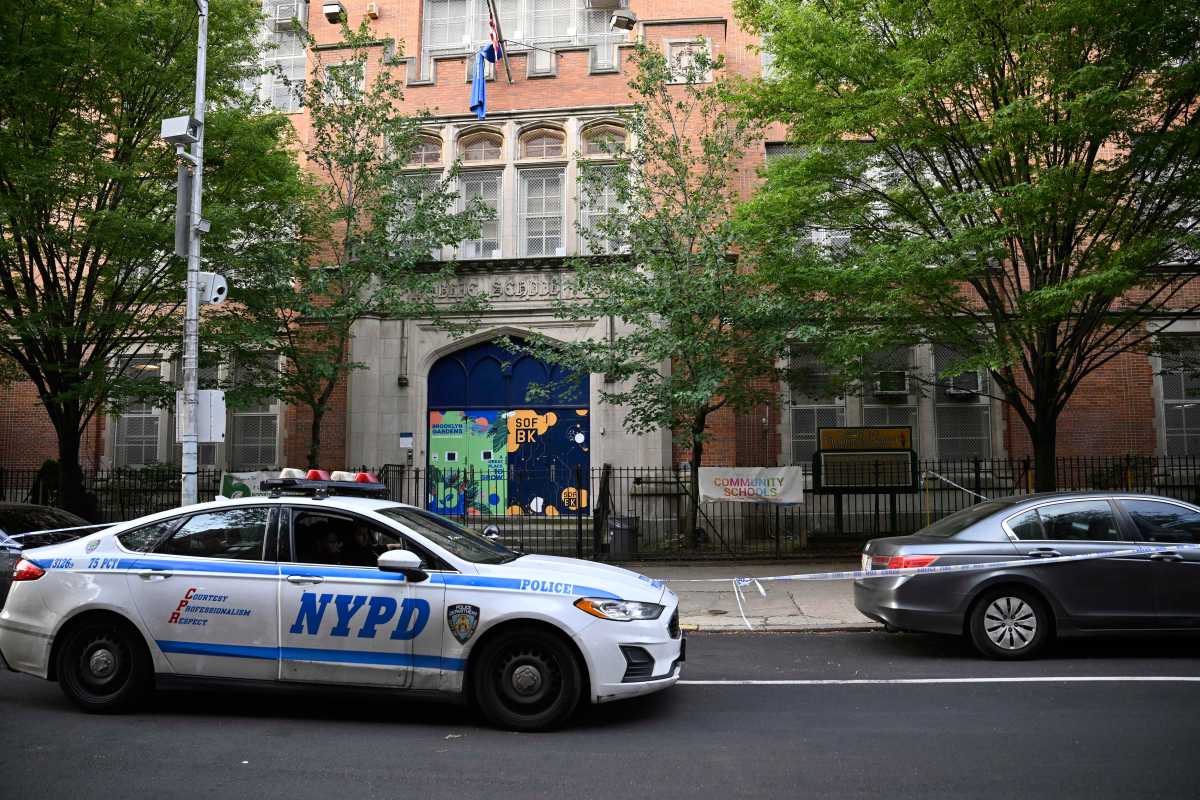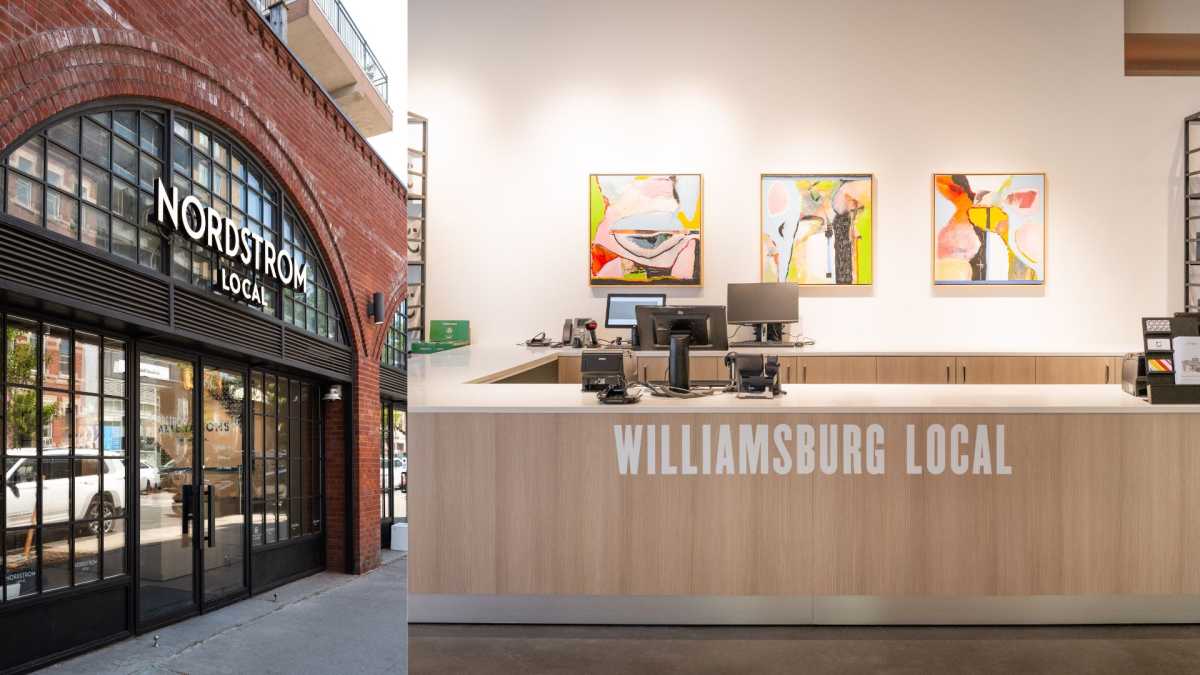A cyclist struck a pedestrian, breaking the 62-year-old man’s hand on a dangerous section of roadway in Prospect Park where the city is trying to slow bikers by forcing them into a narrow lane lined with traffic cones.
In the second serious accident since the street safety measure was put in place, the cyclist ran into the passer-by at around 4 pm on Saturday on West Lake Drive near the Vanderbilt Street Playground, police said.
Park officials insist the cyclist got distracted and fell, injuring no one but himself in the crash. But police say the biker hit a pedestrian, who was then transported by ambulance to New York Methodist Hospital.
The accident comes two months after the Department of Transportation deployed two dozen bright orange, barrel-sized cones intended to tame the roadway after bike accidents left two pedestrians with severe brain injuries, sparking a lawsuit against the city. Last month, a cyclist wiped out next to the cones.
The orange drums are supposed to keep cyclists from reaching dangerous speeds on the downhill section of the street, but some bike advocates worry they are making the road more chaotic.
“There’s less room to maneuver — so there’s a sense [the cones] make things more dangerous,” said cycling booster Eric McClure.
Not only do the cones give cyclists less room to avoid obstacles, they also obstruct bikers’ vision — making it harder to spot pedestrians who are trying to cross the lane, said McClure.
“The city is trying to do the right thing — but I’m not sure it’s actually helping,” he said.
On a recent Brooklyn Paper visit to the hill, cyclists appeared confused about whether they should ride between the cones or beside them — especially since the barrels sit next to a lane marked with a bicycle symbol, which, confusingly, cyclists are only supposed to use during the few weekday hours when the park is open to cars.
The city insists that using cones to constrict cyclists is the best way to keep the park safe because it “decreases the distance a pedestrian must cross” in front of the bikers, according to a spokeswoman from the Department of Transportation.
Other new safety measures include a more-visible crosswalk and a sign warning cyclists to yield for pedestrians, she added.
But traffic engineering experts say more could be done to make the road safe for cyclists and pedestrians.
To keep cyclists from going too fast, the city could force bicyclists to take a zigzagging path on the hill, requiring them to cut their speed before they start their descent, said Jamie Parks, a traffic planner at Kittleson and Associates, an engineering firm that specializes in bicycle transit in bike-loving cities including Portland, Ore.
“One option is to physically curve the path on the hill to slow down cyclists,” Parks said.
Or the city could install speed bump-like devices, like rumble strips for bikes, he said. Those strips would be similar to what already exist at pedestrian crossings along the controversial Prospect Park West bike lane.
Prospect Park officials see the current street design as a work in progress, saying they will continue to monitor the hill.
“There may not be one perfect solution,” Prospect Park Alliance president Emily Lloyd said at a recent meeting. “But we want to be thinking about them.”
Reach reporter Natalie O'Neill at noneill@cnglocal.com or by calling her at (718) 260-4505.


